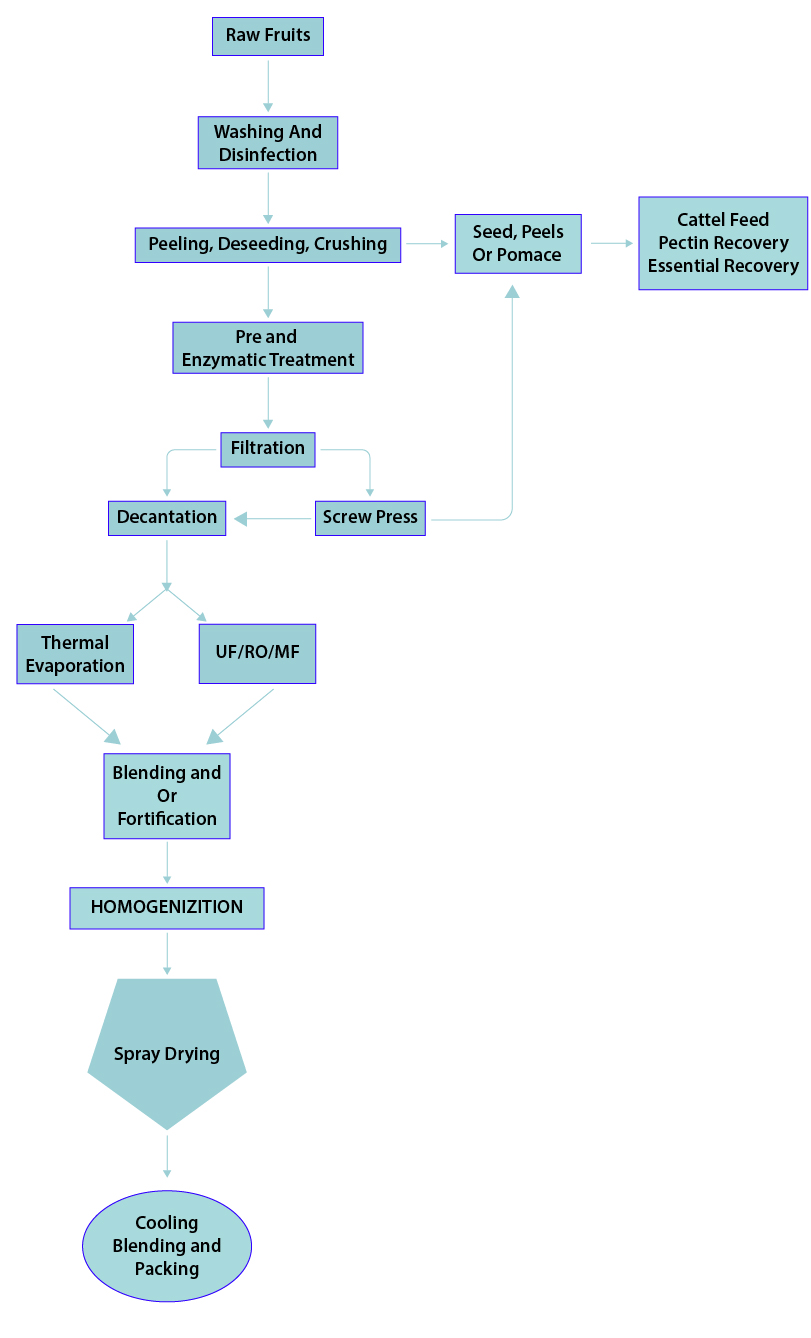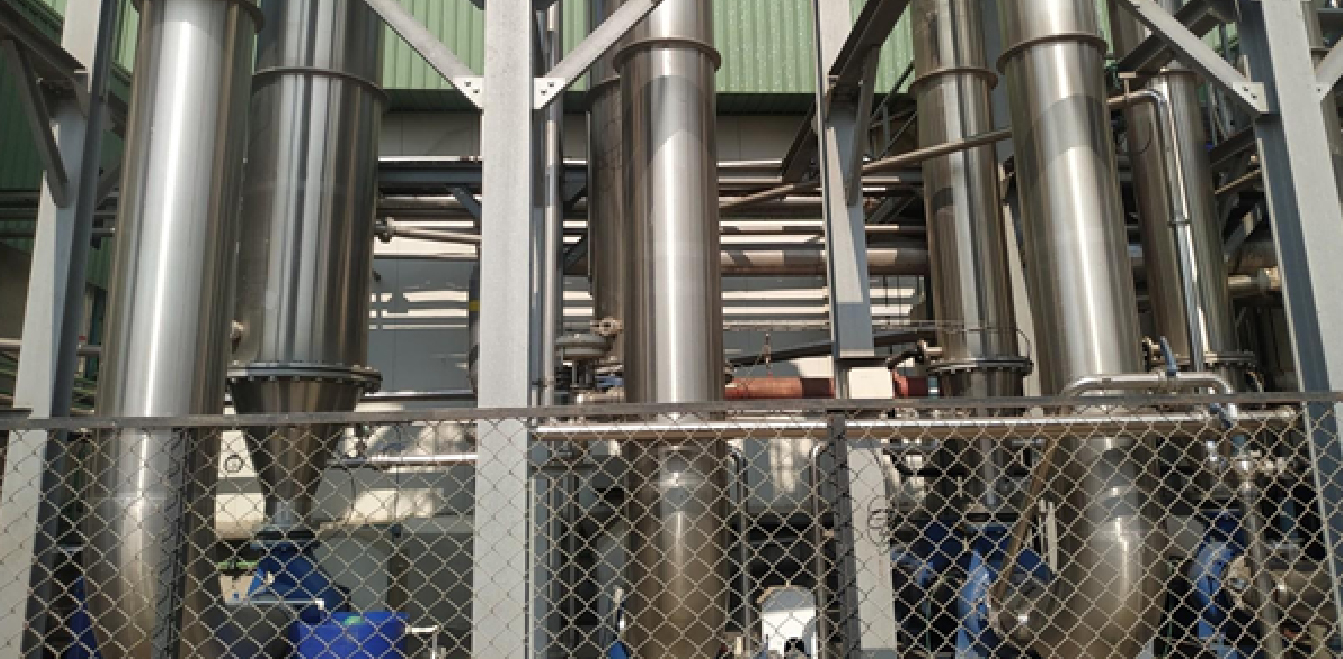Fruit Powder

Advantages and Usage of Fruit Powders
- Fresh fruits and Fruit juice usually have 85% water content. Producing Fruit powders can reduce the volume and prolong its shelf life, and preserve the colour, flavour, and tastes as much as possible.
- Fruit powders are ideal for use in industries as a basic ingredient for juices, soda, energy drinks, food supplements etc.
- Fruit Powder is packed with a wide variety of polyphenols. The powder format has a denser concentration of the polyphenols allowing it to have a real effect on products.
- With a reduced volume and easy transport and consumption, since it does not require refrigeration, fruit powder, gain more space in the fruit intake of people who seek healthier habits.
- This type of input is rich in fibres and the atomization system used ensures that the nutrients present in the plants are preserved.
- Just like fresh fruits, fruit powder promotes bowel function, eliminates toxins, lowers cholesterol absorption, among other benefits.
- Fruit Powders are widely used as a replacement for common artificial ingredients in the pharmacological and cosmetic industries.
- The growing need for clean label products is a broad demand. According to Nielsen, clean label products have been the biggest growth drivers of the packaged food and beverage industry in the past five years.
- Fruit powders can help slim down ingredient labels and increase wellness claims as they are natural and retain many of their built-in health advantages.
- Growing desire among millennials for snacks loaded with vital minerals, nutrients and vitamins is added usage of fruit powder.
- fruit powders make great substitutes for higher-calorie ingredients such as sugar. And a scoop of fruit powder in a glass of water is a better choice than drinking soda or juice while still giving beneficial nutrients. So even though fruit powders are calorie-rich, they have an advantage as a healthy alternative for more calorie-dense foods.
Process Description:

1 Fruit Cleaning Machine
Through preliminary selection fully ripe, undamaged by worms, not stained or rotten fruits are sorted. The materials chosen shall be of high quality which will yield high quality fruit powder. Foreign material such as the residual branch and leaf that adhered to fruit or in loose condition are remove on belt conveyor. In clear water or in the solution of hydrochloric acid, potassium permanganate, bleaching powder etc. , fruits are re-soaked and then dropped in the bubble cleaning machine where fruits are soaked in 3~5 minutes and thoroughly cleaned.

2. Fruit Crushing Machine and Screw juice extractor
The duly cleaned fruits are added into the hoper of machine manually or automatically. disc. The fruits are first diced or crushed in pieces. These crushed pieces are then fed to a screw squeezer cum extractor. The Screw is helical increasing diameter conical screw which applies pressure gently and gradually onto the fruit pieces and the juice separates at the bottom, screened through preselected mesh size, juice is collected at the bottom trough of the machine and pumped to next process. The Peels or pomace comes out from other pressure adjusting station. For getting valuable products from these waste pees or pomace refer to our Pectin production plant section.

3. Juice Clarification and Enzymatic treatment
Clarification or enzymatic treatment is important step in juice making. There are several methods adopted depending upon the plant capacity and fruits to be juiced.
4. Juice Concentrator
The equipment is specifically designed for concentration of fruit Juice depending upon the
initial concentration from juicing process.
It can be a multi-effect (MEE) effect evaporator plant depending upon the capacity. The
evaporation time of juice totally controlled and is usually a few seconds or a few minutes,
the evaporation temperature is low 55-60 ℃. At such a short time and low evaporation
temperature, the composition and the quality of the senses of the product remains intact.
Instead of Thermal Concentration, Reverse Osmosis can be also used. Every method has its own
advantages.

5. Feed Preparation:
The concentrated juice is further used as raw feed to Slurry / Emulsion Preparation section. This is a simple process which involves mixing of various ingredients in a proper proportion by auto weighing system. The tanks with specially designed efficiently mixing and blending agitator arrangement are provided to mix the ingredients. The tanks are also provided with the heating / cooling arrangement so as to maintain proper temperature for producing right slurry formulation depending on the ingredients and desired product characteristics. The feed is homogenized in a specially designed high-pressure homogenizer.


6. Spray Drying:
The feed is then dried to powder form in a spray dryer. The feed is atomized to fine droplets in a large spray chamber by using either disc atomizer or series of high-pressure nozzles. These atomized particles come in contact with hot air and water in it gets evaporated. The dried product is discharged at the bottom of chamber. The dried product entrained with the exhaust air is separated in a high efficiency cyclone separator. The exhaust air is further passed through a secondary cyclone separator for recovering the fines not separated in primary cyclone. Clean air is then vented to the atmosphere. The entire operation of the plant is monitored and controlled through a locally mounted control panel or through PLC as per customer choice.

7. Storage and Packing:
Product is cooled and in a pneumatic conveying system or Screw Cooler and then passed on to packing machine hopper, where it is continuously packed.

Features:
- Low temperature drying which maintains the qualities of the original fruits.
- cGMP construction of equipment to maintain high hygiene level.
- Fully automatic, compact and energy efficient system to ensure smooth and ease of operation.
- Plant foot print is planned as per availability of land from customer.
- Complete sanitary design with CIP system